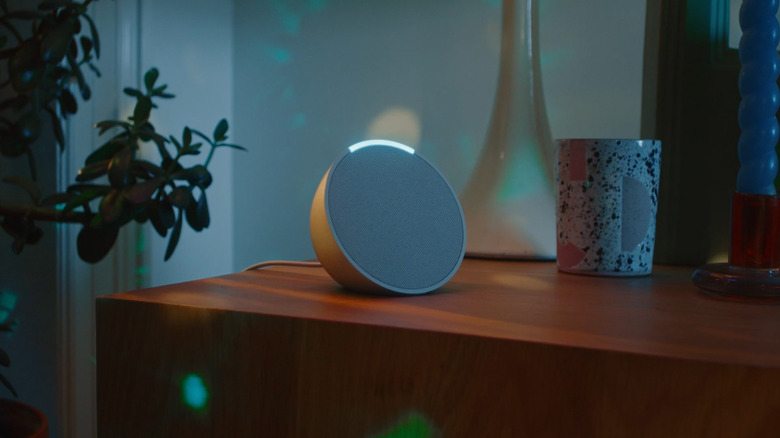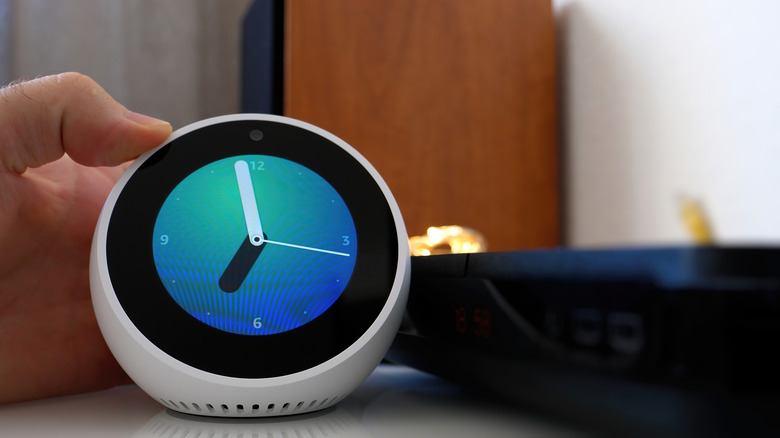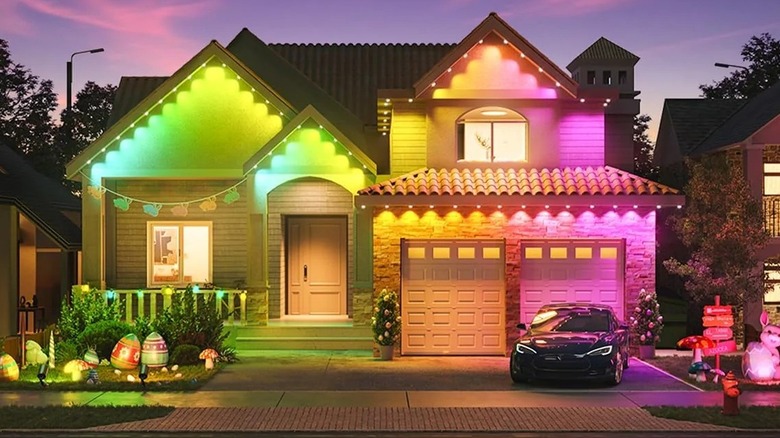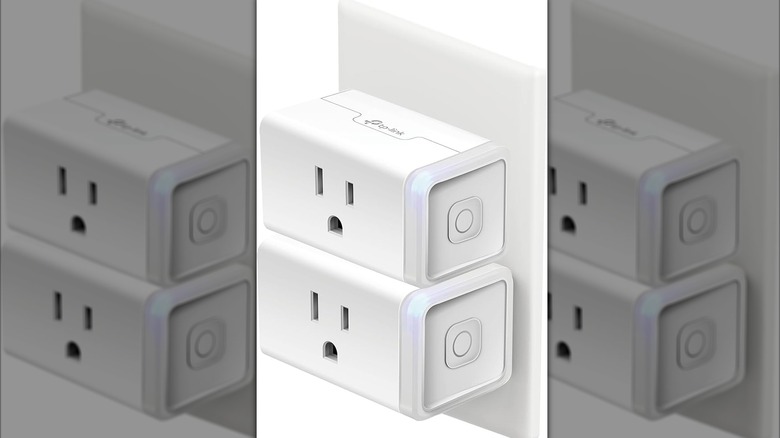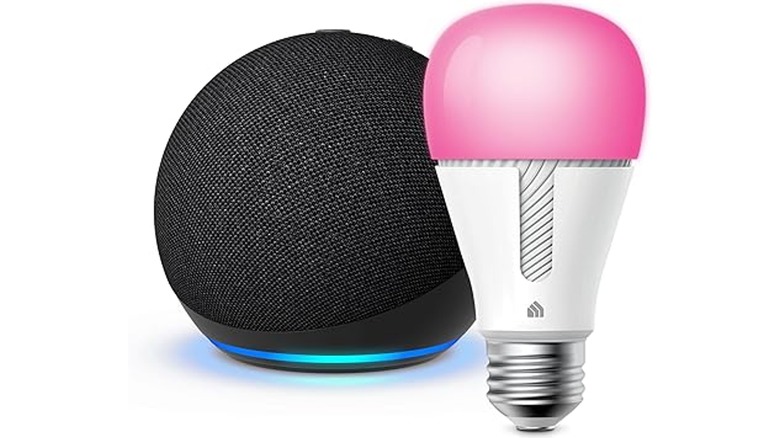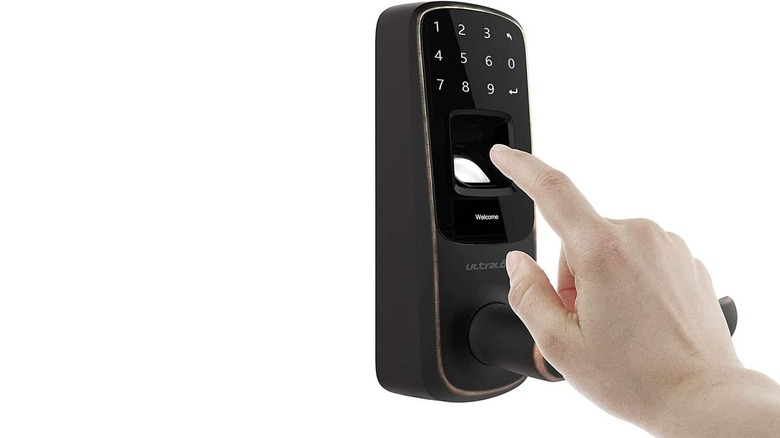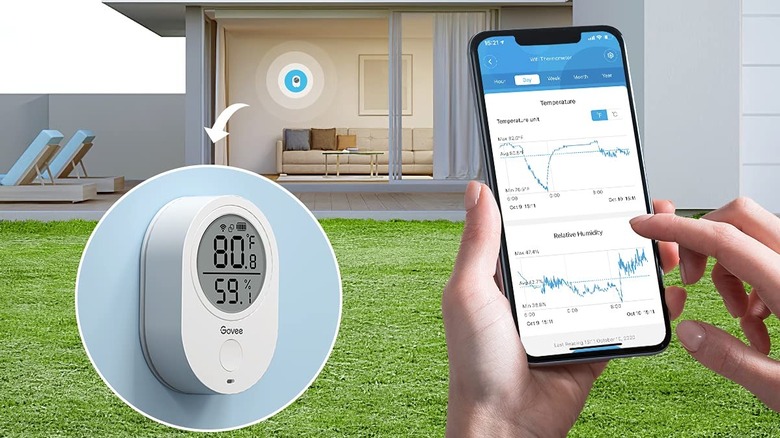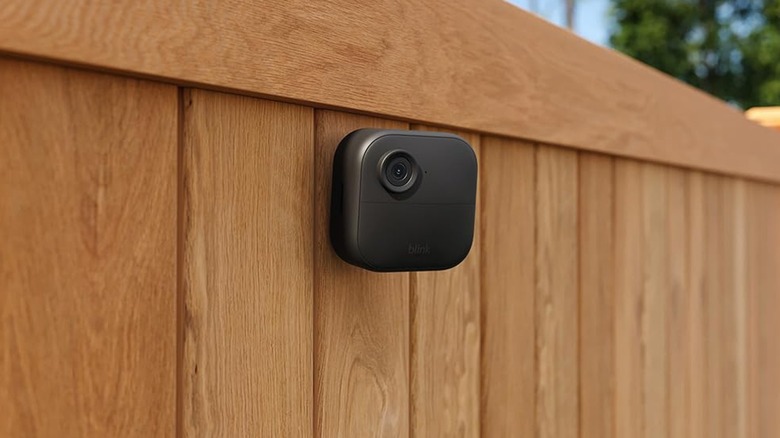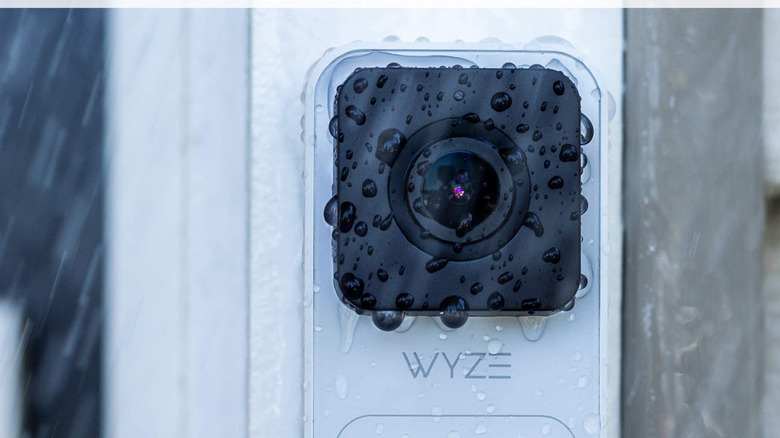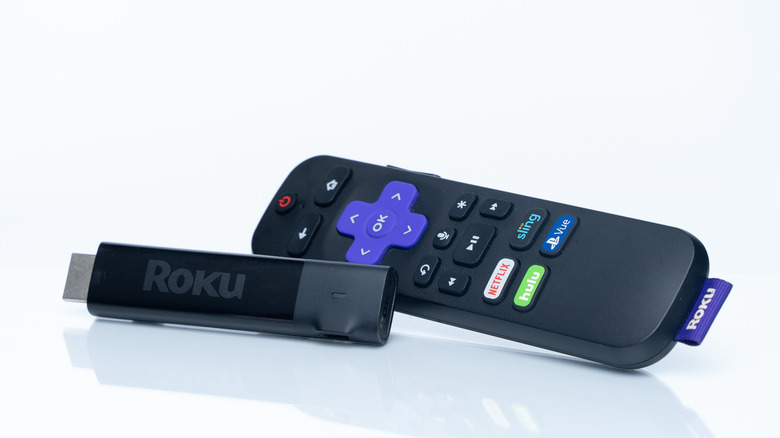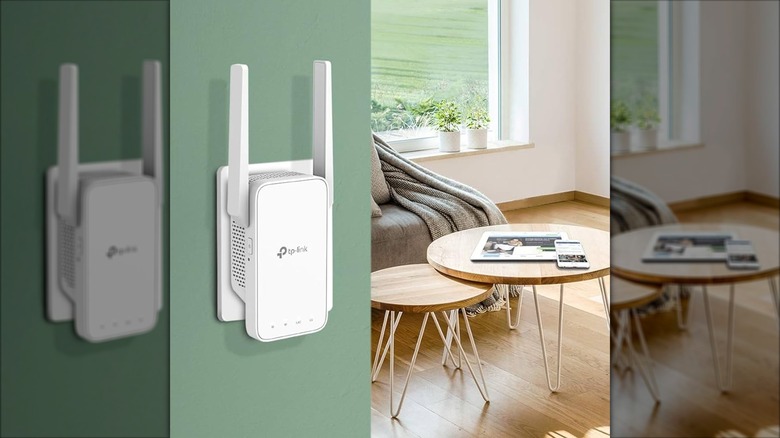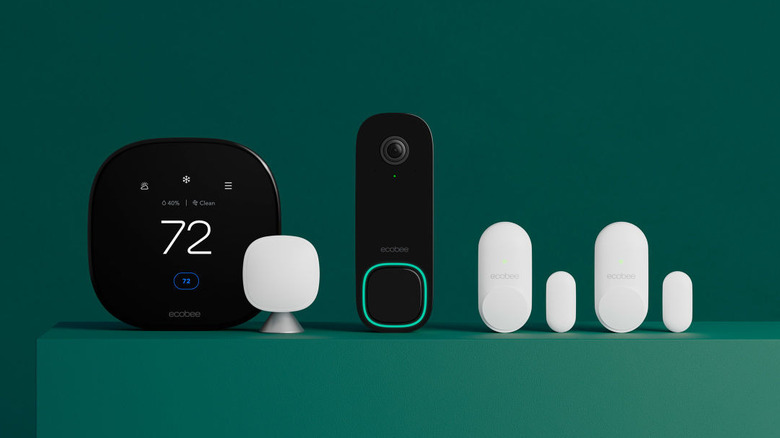11 Cheap Pieces Of Tech To Build A Smart Home On A Budget
We may receive a commission on purchases made from links.
A smart home is no longer a thing of the future, and you can find all manner of devices for just about every need. Whether you want to dispense snacks to a pet while you're away at work or want the whole house vacuumed while you're asleep, there's a tool for the job.
The thing is, many tech brands make smart home devices and appliances, but not all of them are budget-friendly. A home security camera system can cost thousands, not to mention the subscription cost for storing video. You might lament the fact that smart refrigerators can cost thousands of dollars or that so many video systems require expensive subscriptions. There are also often intimidating price tags on big-ticket (and brand-name) items like a high-end Roomba or a Ring doorbell system.
However, it's still possible to outfit a smart home with affordable accessories on a budget. The key is knowing what to look for and skipping the large appliances. From smart home central command centers to temperature sensors to Wi-Fi extenders, there's a budget buy for every smart tool you could want. Although these are budget picks, I have zero complaints after years of using each item. In fact, it turns out that you can get by with spending as little as $800 for whole-house smart technology that will still make you feel like you're living in the future.
Amazon Alexa or Google Nest
The cornerstone of any smart home is a smart device that serves as the command center for everything else. While you can opt for an array of apps on your smartphone or tablet instead, the most cohesive smart homes link every smart device in the house to a voice assistant.
Right off the bat, we should eliminate Apple's HomePod system because it's the priciest of the best-known home assistants. HomePods start at around $99, but that's for the mini version; a full-size HomePod is $299. You also won't find Apple's HomePod products on Amazon, though you can buy directly from Apple or from either Walmart or Target.
For a more budget-friendly buy, check out an Amazon Alexa or a Google Home device. Both cost around $50, depending on the style and model. The 2024 Echo Spot (a round device with video capability) is $50 on Amazon, as is the Google Nest Mini (a non-screen device).
As far as comparisons go, while I love Google devices, my family has used Amazon's lineup for years. Echo devices can do a lot of things, and we use them daily. Although the devices that have screens (like the Spot and Show) are fun for pulling up videos, recipes, and reading replies faster than Alexa can talk, they're not a necessity. Plus, both Google and Alexa devices are compatible with a range of affordable smart home accessories.
Govee outdoor lights
Have you ever struggled to put up holiday lights, only to struggle to take them down again a month or so later? It turns out there's a smart home solution for that dilemma, too. Install a set of Govee outdoor lights and you can change your lights to suit your style year-round.
If holidays are your jam, Govee's outdoor lights offer tons of color options, but outdoor lights don't have to be purely decorative. Adding more lighting outside your home increases visibility when you're out after dark, so it's not just about easier holiday decorating. The lights are also easy to install, with a 3M adhesive backing that sticks to your house's eaves. Temperature fluctuations are of no concern as long as your local climate stays above -4 degrees Fahrenheit and under about 140 degrees Fahrenheit.
Based on Govee's estimates for their outdoor lights' lifespan, they could theoretically last around 11 years — running about 12 hours per day — with essentially no upkeep. Your mileage may vary, but that's an astonishingly long time for a string of outdoor lights to last.
Although the full lighting package will be pricier than, say, a strip light, Goveen's outdoor lighting setups start at about $100 and make for an affordable year-round lighting solution. For example, a string of Govee Outdoor LED Strip Lights measuring about 98 feet long costs $160 on Amazon. The best part? They're compatible with most smart home systems, including Google and Amazon.
Smart outlets
Smart outlets are one of my favorite budget buys for building out a smart home. Even if you don't have to deal with a lack of overhead lights, you'll appreciate the ability to turn off the power to various corded items without getting up off the couch.
Smart outlets can get expensive, so the key is finding an affordable set that's compatible with your chosen smart home system. For example, Kasa Smart plugs are under $30 for a set of four and are compatible with everything from Google to Amazon to IFTTT. You can either use the app on your device to control the outlets, or funnel everything through your voice assistant to make it all hands-free.
What you'll really love about this particular piece of affordable tech is that smart plugs have countless uses. If you're focused on saving money on your energy bills, the ability to remotely turn off specific outlets when they're not in use will tickle your fancy for sure. Most smart outlets are not just voice or app-controlled, either. Many (like Kasa Smart's) are controllable via timer or set schedule, so you can create routines for your entire home. Maybe the coffee pot is powered up at 7 AM, the fan comes on automatically when it warms up midday, and it's lights out (and even Wi-Fi off) by 10 PM. You can even turn off a floor lamp without flipping a switch.
Smart light bulbs
Smart light bulbs are another must-buy on the budget smart home list for a few reasons. If you love the idea of turning off lights remotely, smart bulbs may be a priority over those smart outlets.
There are a few things to know before buying smart light bulbs, namely that you might wind up with another piece of technology to plug in before you're up and running. Some smart bulbs require a bridge or smart hub that then connects to your Wi-Fi (and smart home assistant). Check the product description to determine what your bulbs need to run, and whether that will be a dealbreaker for you.
Smart bulbs are useful for so many reasons, primarily the fact that you can schedule them and set different dimming or color settings for a variety of activities around the house. Features like geofencing (when your phone leaves home, lights go off) and vacation mode (to make it look like someone's home) offer peace of mind and are just plain cool, too.
You'll probably save some energy around the house, too. Most smart bulbs use LEDs, which are more efficient than incandescent lights. LEDs alone can save you about $4,000 over their 20-year lifespan. Even better, Energy Star-rated bulbs also save energy even when they're on and in standby mode. Kasa Smart and Govee both sell smart light bulbs for about $8 to $9 apiece with no hub required.
Smart lock
With all the hype about home security, a smart lock might make sense. There's a lot to know before adding a smart lock to your home, especially if you don't own the property. However, it's worth looking into as part of your smart home suite. Imagine being able to double check that you locked the door while you're leaving for vacation, or setting a temporary code for the delivery person while you're at work.
Whether you have a latchkey kid who's prone to losing keys or a pet sitter stopping by a few times while you're out of town, the ability to program an entry code for anyone you want is so easy. Forget copying your key a bunch of times, just delete the access code when you don't need it anymore. There's also a failsafe built into most locks. My ULTRALOQ, for example, comes with a key you use by flipping open the keypad.
Although I once thought that a smart lock was out of financial reach, they can be relatively affordable. A $150 ULTRALOQ U-Bolt 7-in-1 is what I have, but you can save over $50 by choosing a model without fingerprint entry like the ULTRALOQ U-Bolt 5-in-1. The only caveat with the model I have is that it does require a bridge, but I don't find that to be a problem. My smart lock is also compatible with both Alexa and Google assistant, but you can use IFTTT or SmartThings to control it, too.
Govee temperature sensor
Temperature sensors are another cheap piece of tech that have many uses, depending on what your priorities are. For my household, that's using our Govee Wi-Fi Thermometer Hygrometer to make sure our pets can enjoy a comfortable temperature in all seasons. I set specific alerts so the app notifies me when the guinea pig and rabbit area reaches a set temperature, both highs and lows.
Of course, I've massively erred as a tech writer and haven't connected my Govee to Alexa, but that's now on my to-do list and it's not hard. By connecting your temperature sensor to a voice assistant, you can ask what the temperature is in any area with a smart sensor. You can also ask Alexa to alert you when the temperature goes outside the designated parameters.
The best thing about my Govee thermometer is that I can check the temperature (and humidity) from anywhere, even when I'm not home. Unlike our other technology (like our outdoor cameras), Govee didn't need a bridge to set up, which makes this a simple device to add to your lineup.
Of course, Govee also has packages with multiple sensors (you can grab a set that detects water — it comes with an alarm) and even displays, so there's a lot to love and spend money on. For what it's worth, my purchase has been well worth it — and I've been using my Govee thermometer for over three years now with zero upkeep or battery changes.
Blink cameras
When I started shopping for outdoor cameras a few years ago, Blink was at the top of my list. I wanted a simple solution that would capture video based on motion detecting (because 24/7 video means hundreds of batteries per year) and didn't cost anything to maintain. A set of three cameras (plus a bridge) was the perfect solution for us.
Whether you want Blink cameras for safety monitoring outside or opt for indoor models for other reasons, you won't spend a ton of money for function. My cameras pick up even the slightest movement, like a spider crawling across the camera or leaves blowing around on the driveway. They also work well at night; my camera has captured a bear a couple of times, and skunks, deer, and raccoons at other times. If you're concerned about home safety, Blink's floodlights are an easy DIY add-on that helps your cameras capture better images and videos. Still, the nighttime mode is sufficient for my purposes, and it might be enough without any add-ons.
Admittedly, prices seem to have increased since I bought my set of three cameras, but Blink is still one of the most affordable brands with a good reputation (and no subscription fees). A set of three Blink Outdoor 4 cameras will cost you around $99 when the set goes on sale on Amazon, while the regular price is about $260.
Smart doorbell
Ring might be the best-known smart doorbell brand, partly because security cameras are part of the setup. Ring also has separate security cameras, but I skipped right over both products while shopping for my smart home because I'm not willing to pay for a subscription to save my video. Thus, I'd skip Ring doorbells due to cost, convenience, plus incompatibility with Google Home. Ring subscription prices can also change, so it's worth comparing the more affordable Wyze versus the Ring doorbell if you want similar features.
Most smart doorbells have cameras, microphones, recording functions, and, of course, doorbell options. Wyze might be the most affordable option compared to Ring, and you can grab a Wyze video doorbell for about $45 on Amazon. Wyze has features like pre-roll recording, high video resolution, and support for your current doorbell chime. You also won't pay a subscription fee as Wyze uses an onboard MicroSD card to store your visitor videos. Wyze is compatible with Google Home, Amazon Alexa, and IFTTT. If you have a video device (or the app), you can give your voice assistant commands like "show me the front door."
If you prefer to bundle together your smart lock and doorbell, there are devices that do it all, too. However, those kits are often far more expensive than buying separate devices, at least if you're shopping on Amazon. For instance, the eufy Video Smart Lock is around $280.
Streaming stick
Most of us own smart TVs these days, but there are some inexpensive ways to smarten up your old-school TV. With an HDMI-compatible streaming stick, you can also take all your streaming services with you, which is great for travel or visiting family.
I've used Roku streaming sticks for such a long time, I even owned one that was so dated, it couldn't load Disney+. I tend to trust their performance, enough so that the smart TVs I've purchased in the last five years are all Roku-enabled. Up until purchasing our newest TV a few months ago, we used a Roku Streaming Stick that retails for about $50 (but often goes on sale for about $30).
The only issue I ever ran into with the Roku stick is that it would overheat after hours of watching TV, and we'd have to unplug it, let it cool down, and reboot. That said, ours was somewhat dated, and I would expect newer versions to perform better. That anecdote aside, Amazon also makes a streaming stick alternative that is equally affordable, so Roku isn't the only affordable big-name option.
An Amazon Fire Stick is a great option if you have Prime and like Amazon's programming, but it's also compatible with all your favorite must-have streaming services — even the Roku Channel. The Amazon Fire Stick is also around $50 but can be snagged for closer to $30 when it goes on sale on Amazon.
Wi-Fi extender
Good Wi-Fi is an essential part of a smart home, but you don't have to blow your budget to make sure the signal reaches your entire house. The good news is that Wi-Fi extenders come cheap, so you don't have to splash out to get a better signal whether you live in 2,000 square feet or 20,000.
I've spent as little as $20 on a Wi-Fi extender that helped my internet reach through a few walls and to the far end of my house with good results. The key is to look at the square footage rating on your preferred device and figure out what will best serve your particular property. It might be harder, for example, to use an extender in a two-story house than in a single-story, even if the single-story has more square footage.
My first Wi-Fi extender was a knockoff brand that is no longer on Amazon. Once my kids decided that we needed Wi-Fi in our kid cave in the backyard, I went back to Amazon to find something a bit more powerful. I settled on the TP-Link AC1900, and it performs solidly. I paid around $80 but it also seems to go on sale for under $50 on occasion.
I might need to look at upgrading my Wi-Fi to get the most out of the whole setup, but this proved that I don't need an expensive (or extensive) mesh system to get better internet across my home — and you might not, either.
Smart thermostat
In my house, we don't have a whole-house thermostat because we don't have central heat or air. However, our previous home was more modern and had a basic thermostat. While the home had some energy leakage issues, I wish I had invested in a smart thermostat for the simple function of being able to turn the HVAC on or off from afar.
If the only feature you get out of a smart thermostat is cooling the house down before you get home from work or turning the heat on occasionally while you're on vacation to keep the pipes from bursting, it's probably worth it. Other reasons to add a smart thermostat to your home include energy savings, simple energy usage tracking, and compatibility with other tech like air purifiers and humidifiers. Energy Star certified smart thermostats can even save you up to 8% on your energy bill.
Plenty of affordable smart thermostats are available on Amazon, with most starting around $70. Brands like ecobee, Google Nest, Wyze, and Honeywell offer smart thermostats where you can set your heat or AC for optimal comfort and energy savings. The ecobee3 Lite Smart Thermostat is around $150 and is compatible with all your favorite voice assistants, including Siri. It's also Energy Star certified, and ecobee suggests you can save up to 23% on energy costs each year — more than Energy Star's estimate. Ecobee is also compatible with various sensors to make your home even smarter, energy-wise.
